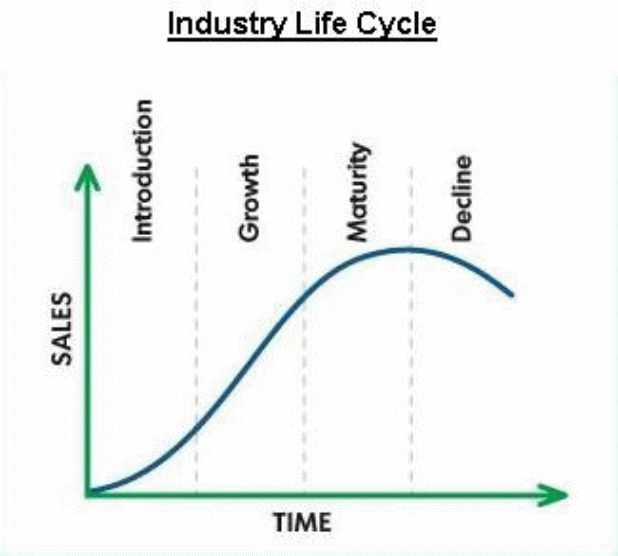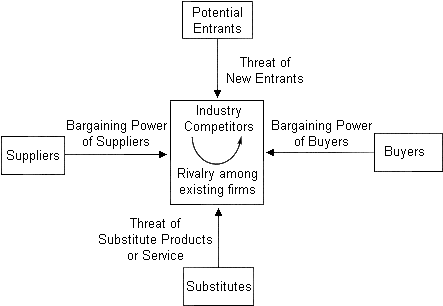Abstract
Strategic marketing is one of the most important strategies that many companies have adopted for their marketing. Without strategic marketing, most organizations would be unable to achieve their short and long term goals effectively (Czincota 2009, p. 112). Telecommunication industry requires a very comprehensive marketing for it to succeed (Gershon 2001, p. 45).
Many promising communication companies across the world have employed different marketing strategies in trying to ensure they meet the ever changing market demands. Such companies have devised marketing strategies, which have seen grow over years. However, new companies meet several challenges before they enter telecommunication industry fully. For new entrants, their success is based on only on market researches and well laid marketing strategies (Don 2005, p.57).
Nigeria’s telecommunication services are growing rapidly today. This can be attributed to its fast moving economy and population growth (Hakan 2004, p. 211). As a result, communication technology has found a good ground in this country. Nigeria’s telecommunication industry is today, facing a very stiff competition.
There are several communication providers in this industry such as Accat, Accellon Nigeria Limited, Galaxy Information Technology and Tel. Limited, Nigeria Telecommunication Limited and Integrated Communication and Network Services among others. To survive in the market, these organizations have come up with different marketing moves (Hart & James 2005, p.113).
Nevertheless for any company to have competitive advantage, new marketing strategies need to be developed. This can be carried out through researches to identify new opportunities, niches, segments and marketing mix that have not been utilized (Adcock & Al Halborg 2001, p.111). Researches are also necessary for sustainable growth for any company operating in the Nigerian market. Strategic marketing has proved to be the best marketing mode in Nigeria among the players (Brown 2010, p.89).
Introduction
The aim of this paper is to come up with a new marketing strategy in Nigeria’s telecommunication industry. The strategy is aimed at developing counter competitive moves, customer retentions, market expansions and profit maximization.
Consequently, the paper is aimed at identifying sustainable mode of marketing in the global perspective through meeting technological dynamics and multicultural diversity. From the research and literature reviews, despite, stiff competition in the Nigerian telecommunication industry, the country still has a lot of marketing opportunities. This research is for five years organization focus.
Research Objectives
To meet the research goals successfully, several objectives are set to guide the research team. The objectives are clearly stated to help for easy understanding and interpretation during the study (Alexander 2009, 117). The following are some of the objectives developed for the telecommunication industry in Nigeria (Creswell & John 2009, p.32)
- To find out possible market expansion gaps expand in a five year period
- To find out the best customers retentions methods in the market
- To find out the Nigeria telecommunication marketing trends
- To determine the best competitor strategies
- To find out how Nigerian telecommunications’ external environment influence its marketing
The objectives were developed based on their achievability, measurability and specificity. The objectives are also useful for developing action plan as they are guides to priorities for the people working on them and specific end term goals. To achieve the goals there are also follow up mechanisms over the objectives (Creswell & John 2009, p.13).
Research Questions
Questions were developed to guide the researches during this study. The questions were created to ensure that the research was conclusively covered and the data gathered were consisted and reliable. The study questions used include;
- What are the opportunities in the Nigerian telecommunication industry?
- What are the major market challenges in Nigeria?
- What are the best marketing strategies?
- How do external organization factors affect this industry?
- What is the political and economic status of Nigeria?
Industrial Overview
Nigerian telecommunication industry owes its birth to colonial period when it shared telephone and electric services with the neighboring countries. Today Nigeria has over 108 companies of which 48 are licensed internet and communication providers. The democratic government of Nigeria has lowered its regulation to the industry that many companies are fighting to enter the industry.
The main communication provider of Nigeria for domestic and external telecommunication from 1985 has remained Nigeria Telecommunication Limited (NITEL) with several mushrooming private companies. The industry has seen a lot of development since 1993 when the government through Nigeria Communication Commission (NCC) lowered regulations for the private investors (Gershon 2001, p.23).
Literature Review
NITEL failed to provide effective communication services both locally and internationally in Nigeria. The company was experiencing poor management issues that rendered it unable to effectively operate (Clancy & Peter 2000, p. 67). Consequently, was operating under high cost with limiting universal coverage. It only had the Nigeria has only Nigeria Mobile Telecommunication Limited (M-Tel) as mobile cellular provider (Gershon 2001, p.23).
M-Tel coverage geographical was small with one switching center and large capacity to manage as a result the first companies to be licensed found Nigeria to be a very fertile trading ground (Husting 2010, 76). Most of these companies have ventured into mobile cellular phones services provision and internet services (Huang & Yingluo 2008, p.214).
Trading in Nigeria has the advantages of supportive government policies, large purchasing power and vibrant economic environment (Phillip 1996, p.117). However, political instability today plays a major hindrance in telecommunication investment (Ludicke 2006, p.119)
Research Methodology
This research was carried out through case study on the major market operators in Nigerian Telecommunication Industry. The case study was carried out over M-Tel, Galaxy Information Technology and Tel. Limited Accat and Accellon Nigeria Limited. This research method was selected based on its ability to give more reliable information across the growth of each of the organizations. Data were collected and recorded for each company before analysis and interpretation were made (Creswell & John 2009, p.9).
Discussion and Analysis
The information collected on telecommunication market in Nigeria that there is a potential growth opportunities in Nigerian Telecommunication industry.
This was shown by product, price, place, promotion, people, physical evidences and process data collected (Kerin, 2011, p.119). It was identified that the best marketing strategy is niche penetration. The research identified several loose points among the pioneers such as poor customer services, poor management system and lack of product differentiation (Kotler & Kevin 2009, p.34).
A lot of financial resources are required for promotion of products through the media and publication to reach as many customers as possible. Most of these companies work with low skilled and lowly paid employees. This is an opportunity for a company aiming at getting larger market share.
Such company need high skilled personnel and provides incentives as motivational factor. Strategically, most companies in Nigeria lacks good organization policies for them to achieve their full potential. Marketing policies should limit bureaucratic measures, which might causes delays during service provision (Keller 2002, p.56).
To manage Nigeria telecommunication market a company need to focus on changes in consumer tastes, competition system and economic dynamics. A company needs to undertake a lot of research to identify more market niches (Kotler & Gary 2008, p. 79). This has greatly attributed to the industry trend as shown.
Fig. 1 Telecommunication Industry Growth Trend in Nigeria

Niche marketing is not always easy for companies to execute; organizations need proper machinery for evaluating their decisions as well as advancing. This calls for unending research in the market needs as well as emerging trends. It is also recommended that the company should recruit experts that carry out close supervision on the customers’ need for identification of consumer satisfaction. This is the only sure way of gaining customers’ loyalty as well as expanding market segments in Nigeria (Rogers 2008, p.76).
It was realized that Porters Five Score Model and Value Chain were the best marketing models that can be applied in Nigerian telecommunication (Michael 1998, p.216). Additionally, companies need managers with well understanding of Nigerian market. This will be useful in managing organization processes, structures and outcomes. Good management body is also required for liaison roles in an organization since Telecommunication industry relies on several other bodies (Michael 1998, p.211).
Fig. 2 Porters Value Chain

Anticipated Problems
Nigerian telecommunication offers four main challenges global marketers. Political instability is a major for the investors. Consequently, competition is so stiff in the market that strong competition strategies are required. Acquisition of skilled labour is a problem as most companies are hunting them down. Finally, managing the diverse customers’ satisfaction brings a lot of challenges to many organizations (Luther 2011, p. 119)
Conclusion
The research on Nigerian telecommunication industry care was set into plan after thorough expert researches and evaluations. The market was analyzed and scanned all the possible factors that can affect our operation. Through this, a company can develop a strategic marketing in this market with high expectations of success. Apart from this, constant research is required to manage changes in the market that can be incorporated to produce better services as well as profits.
References
Adcock, D & Al Halborg, C 2001, Introduction Marketing: Principles and Practice, Routledge: London.
Alexander, C 2009, Strategic Marketing Management, Bright Star Media, Toronto.
Bertocci, D 2009, Leadership in Organizations: There Is a Difference Between Leaders and Managers, Havard, University Press Britain.
Brown, D 2010, Experiential Approach to Organization Development, Prentice hall, London.
Clancy, K & Peter, C 2000, Counter Intuitive Marketing, Random House Business Books, London.
Creswell, J & John, W 2009, Research design: qualitative, quantitative, and mixed methods approaches, Sage, Los Angeles.
Czincota, M 2009, Emerging Trends, Threats and Opportunities in International Marketing, Business Expert Press, New York.
Don, S 2005, “In the Mix: A Customer-Focused Approach Can Bring the Current Marketing Mix into the 21st Century”. Marketing Management, Routledge , London.
Gershon, R 2001, Telecommunications management: Industry Structures and Planning Strategies, Lawrence Erlbaum Associates, Mahwah, N.J.
Hakan, H 2004, Rethinking Marketing: Developing a New Understanding of Markets, John Wylliea’s, Southern Gates.
Hart, T & James, M 2005, Nonprofit internet strategies: best practices for marketing, communications, and fundraising success, Wiley, Hoboken, N.J.
Huang, W & Yingluo, W 2008, Global mobile commerce strategies, implementation, and case studies, Information Science Reference, Hershey.
Husting, S 2010, Improve Your Marketing to Grow Your Business: Insights and Innovations that Drive Business and Brand Growth, FT Press, New Jersey.
Phillip, K 1996, Outlines & Highlights of Marketing by Kotler, Academic Internet Ventura, Publishers.
Ludicke, M 2006, A theory of Marketing. Outline of Social Systems Perspective. Regine, Zimmer Frankfurt.
Luther, W 2011, The Marketing Plan, How to Prepare and Implement, Broadsway, New York.
Michael, P 1998, Competitive Advantage: Creating and Sustaining Superior Performance: With a new Introduction, Simon and Schuster, New York.
Rogers, E 2008, Diffusion of Innovation, Simon and Schuster, New York.
Kotler, P & Gary, A 2008, “Marketing defined”, Principles of marketing. London, Free Press.
Kotler, P & Kevin, L 2009, A Framework for Marketing Management, Pearson Prentice Hall London.
Keller, K 2002, Strategic Brand Management, Pearson Prentice Hall, London.
Kerin, H 2011, Marketing: The Core, McGraw-Hill/Irwin, New York.